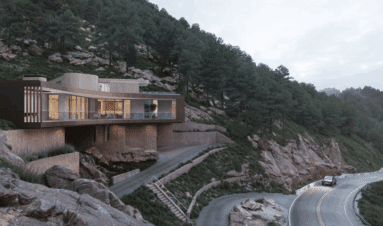Highlands Masonic Temple
3550 Federal Boulevard
Fast Facts
Architect: M. H. Hoyt & B. Hoyt
Architectural Style: Classical Greek Revival
Year Built: 1927
Designation: National Register of Historic Places
Neighborhood: Highlands
Handicap Accessible
HIGHLANDS MASONIC TEMPLE: HOME TO DENVER’S EARLY TWENTIETH CENTURY CIVIC LEADERS
Are you familiar with the Masons and their contributions in the early years of the city?
The Highlands Masonic Lodge was designed by brothers Merrill and Burnham Hoyt in 1927. It was constructed in the Classical Greek Revival style and listed on the National Register of Historic Places in 1995. The building remains a place where Freemasons and their families can gather as a fraternal family organization. It is now also used as a place for public and private events such as festivals and weddings, and hosts many Masonic groups such as El Jebel Shriners.
The Masonic Temple is the largest building in the Highlands neighborhood, towering over Federal Boulevard. It includes architectural detail such as original chandeliers and lighting, classical art deco ceilings, a bust of President and Freemason George Washington, a grand ballroom, square and compass designs in the floor work and original door knobs throughout the building (Highlands Masonic Temple National Register of Historic Places Nomination Form).
Architects
Burnham Hoyt (1887-1960) and Merrill Hoyt (1881-1933) were brothers who grew up at 2849 West 23rd Avenue in north Denver. They both graduated from North High School. Merrill received his architectural training at the prestigious firm of William Fisher, Architects. Burnham received his training at the Beaux Arts Institute in New York City. After serving in World War I, Burnham returned to Denver in 1919 to join his brother and form the architectural firm of H. B. and M. Hoyt, Architects. The firm prospered in the 1920s and is credited with the design of many of Denver’s iconic buildings of the era. Their designs embraced various historical styles including Greek revival, Romanesque and Spanish Revival Together they designed residential, commercial, academic and religious buildings. After Merrill’s death in 1933, Burnham returned to New York City and eventually became the Dean of the School of Architecture at New York University. Later he returned to Denver and had his own architectural firm until 1955. Both Hoyt brothers had numerous civic and professional accomplishments to their credit (National Register of Historic Places Nomination Form).
The Masons
The order of Ancient Free & Acccepted Masons has been a tremendous force in America. George Washington, Thomas Jefferson and Benjamin Franklin, founders of the United States, were Masons. As America grew to the west, Masons were always in the forefront, bringing with them a love of freedom, a spirit of lawfulness and a sense of community. Masonry came to Colorado with the pioneers and it can be said that the history of the early days of Colorado is the history of the achievements of the Masons of that time. Their firm beliefs in the tenants of the Fraternity – brotherly love, relief and truth – and their constant practice of the four cardinal virtues – temperance, fortitude, prudence and justice – caused them to work in harmony and to take a prominent part in all of the movements tending to promote the welfare of the community. The first Masonic gathering took place at a cabin near Cherry Creek in 1858, the year Denver was founded. The Highlands Temple (Lodge #86) was one of the earlier lodges established in Denver. Chartered in 1897, they originally met in another historic building at 3220 North Federal Boulevard. In 1927, they designed and built their current home (National Register of Historic Places Nomination Form).
The Masons were a prominent force in the early years of the city, and their temple in the Highlands reflects the prominent role they played in civic and political life. The temple, built in 1927, has served as their home for almost a century. In addition, the building now plays host to a variety of public and private events.
Neighborhood
The Highlands is not just one district, but many, and was originally a city in its own right. It was incorporated in 1875. By 1890, Highlands included more than 35 separate subdivisions. The city had high aspirations of its own, touting clean air high above the smoke and industry of Denver, clean artesian water and, most important, clean morals. Although liquor was not forbidden in Highlands, liquor licenses were so expensive that none were issued until well after Prohibition. When Denver was still a dirty, dusty, rambunctious frontier town, devoid of trees and other vegetation, early Highlands settlers were engaged in more civilized pursuits: planting trees and gardens. While Denver was called the Queen City, Highlands was known as the Garden City of the Plains (Potter-Highlands Neighborhood History).
References
Highlands Masonic Temple National Register of Historic Places Nomination Form.
Denver Public Library. Potter-Highlands Neighborhood History. Retrieved from https://history.denverlibrary.org/potter-highlands-neighborhood-history.
Map
Highlands Masonic Temple
3550 Federal Boulevard, Denver, CO, United States
Nearby Sites
View All
High, Low, Buffalo
High, Low, Buffalo High, Low, Buffalo creates architecture that stirs souls and elevates everyda...
More Info
Tomecek Studio Architecture
The thoughtful, collaborative and lasting creation of architecture has the ability to impact the ...
More Info